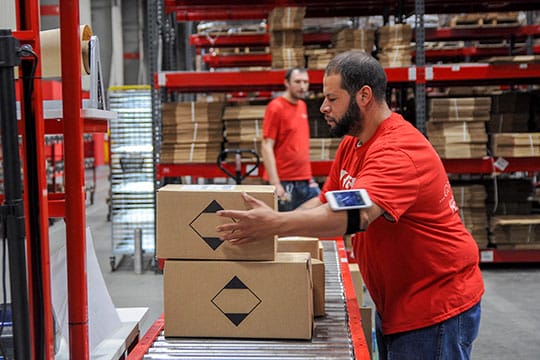As an employer, it is your responsibility to ensure that your employees are safe and protected at work. You can create a culture that emphasizes employee wellbeing and safety in your workplace and provides tools and resources to achieve their goals.
Employees who feel safe will be more productive, which leads to better financial results for employers. And employees who feel valued will stay with their company longer—which also leads to better financial outcomes for employers!
For an employer to protect its workforce from injury or illness, it must understand what causes some of the most common workplace hazards. The following are some of the most common injuries that can occur:
- Burns.
- Cuts.
- Electrocution.
- Falls.
- Fall protection issues (for example, inadequate fall arrest systems).
There are many preventative measures employers can take to address each hazard above proper use of Personal Protective Equipment (PPE) such as gloves or hard hats; using correct tools; training employees on how best to handle risky situations like overhead power lines; ensuring workers know what kind of hazards exist in their area so they can avoid them when possible…the list goes on! However, one thing remains clear: errors happen no matter how prepared you think you’ve made yourself beforehand.
1. Train Your Employees

Training is an essential part of workplace safety, and it’s important to make sure that your employees know what they’re doing. Here are some tips for creating a successful training program:
- Train everyone on safety procedures. Employees should be trained in how to use their Personal Protective Equipment (PPE) and respond in an emergency. This should be ongoing, so if you have new hires, make sure they are also trained. It’s also worth noting that different kinds of employees will require different types of training; for example, manufacturing workers may need more information about emergency response than office workers.
- Ensure your employee training is tailored to their specific job function(s). For example, someone who works with heavy machinery needs more extensive safety instruction than someone who works with paper files all day long—and vice versa!
Recommended for you: What Will Be the Major Changes in Workplaces in 2022?
2. Install and Test Your Security Systems

The second important step to making your workplace a safe place has a security system in place. A security system can be as simple as a door lock or as complex as an entire network of cameras that monitor every inch of your property. According to the recent trend, it is best to use a security system that can allow access based on mobile devices. These systems are called mobile access control systems and use smartphones as access keys.
The type of security system you choose is up to you and the needs of your business. It’s also essential to ensure that it’s installed correctly, tested regularly, and maintained so that it continues working effectively to keep employees and visitors safe.
If you do not have a security guard at your business yet (or would like one), we recommend using this time before hiring someone else to take care of this task by yourself to know what needs doing when choosing who should take over after that point!
3. Obey the OSHA Laws

OSHA is the federal agency that oversees workplace safety. OSHA requires employers to train employees on safety procedures, provide them with the appropriate equipment, and report injuries to OSHA. The following are some of the most important regulations:
- A company must conduct regular inspections of the work environment and hazards. If any threats are discovered, they should be removed or addressed immediately (e.g., a loose electrical wire).
- Employers must also provide their workers with training on safely operating equipment or handling materials used in their daily activities at work (e.g., forklifts). This training may include demonstrations by other workers who know how something works best under certain conditions, so you know what they look like when they do it right!
- Companies must also keep records related to all injuries as well as any deaths that occur while someone is working there; these records must be kept for at least five years after each incident occurs, so it’s good practice if we don’t want anyone getting hurt again because we didn’t have anything available for reference purposes.
- OSHA regulations require employers to report all work-related fatalities, amputations (partial or complete loss of a limb), and hospitalizations within eight hours. Employers must also file an accident investigation report with their state director within 30 days after receiving notice of a severe accident involving loss of life or limb.
4. Reduce the Risk of Repetitive Stresses on the Body

The best way to reduce the risk of repetitive stress injuries is simply by taking breaks. Take a break whenever you feel that your body has had enough and take one more break just for good measure!
Other tips include:
- Use ergonomic tools like a computer mouse pad or wrist support, an anti-fatigue mat, a backrest (which can be used while sitting), and even a headset, so you don’t have to hold the phone up to your ear with one hand.
- If using an office chair with arms or armrests, adjust them so that they’re level with the height of your desk; this will allow for better posture when typing and prevent strain on your shoulders as well as neck injuries from leaning forward too much when using computers at work all day long each week without any days off during which time employees might get some rest from being on their feet all day long instead of sitting down most often throughout their shift instead.
- Take frequent breaks from sitting at your desk. Don’t just stand up and then immediately sit down again—take several slow walks around the office so that your muscles can relax for a few minutes before returning to work.
- If possible, use a standing desk, or at least use one if it’s been cleared with management first! This will allow you to move around and stretch out while working. If neither of these options is available where you work yet, but they are planned by management within the next year or so, then ask them kindly whether there would be any way possible we could get started sooner rather than later?
You may like: How to Setup a Small Business Office for Success?
5. Perform Regular Safety Inspections

In addition to providing training and education, it is also essential that you perform regular safety inspections. This will help ensure that your employees wear the proper safety equipment and safely do their jobs.
- Check for Hazards: Make sure you check for hazards regularly by having periodic inspections of everything from chemical spills to electrical outlets. This will help ensure no potential problems with these things before they become serious issues resulting in injury or even death.
- Check for Proper Safety Equipment: You should be checking all of the safety equipment used by your company’s workers and ensuring that they have been adequately trained on how it works in case an emergency arises where they need it most (e.g., an accident occurs). If something has been damaged or worn down over time due to being used too much, this could lead to someone getting hurt while trying to use it again, so make sure everyone knows when something needs replacing!
6. Keep Employees Accountable for Their Actions

I believe that employees should be held accountable for their actions. Companies must have a policy in place that does this because it shows employees that they are being held responsible fairly and consistently.
I have worked with several companies throughout my career, and I have noticed that some do not have a system to hold their employees accountable. This can cause problems because if someone does something wrong or makes a mistake, there is no way for them to be reprimanded or punished without it coming across as unfair or unjustified.
7. Consistently Enforce Safety Rules and Regulations

With the rise of workplace injuries and fatalities, employers should enforce workplace safety rules on employees.
Employers should enforce safety rules and regulations on employees to ensure workplace safety. This is because employees are more likely to comply with the set of rules in the office if they had been given a formal warning before being penalized. They will also be more motivated to follow the rules to avoid getting penalized again.
This can be done through a well-defined policy that clearly states what is expected of them and what could happen if they fail to follow their obligations. The policy should be communicated clearly to all employees to know what is expected of them and what will happen if they commit an offense.
You may also like: How to Create a Healthy Workspace / Office Space at Your Home?
Conclusion

When it comes to safety at work, the employers have a role to play as much as the employees. They have to ensure that the employees are well insured and safe by effectively implementing safety protocols at their workplace. Employers also need to equip their employees with the proper training and skills required to do their jobs well. With a good understanding of risk management and comprehensive training, injured workers can be reduced considerably in the workplace.





